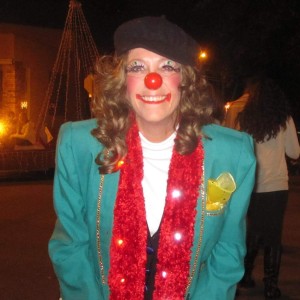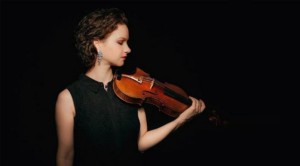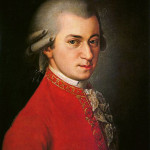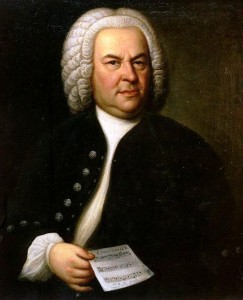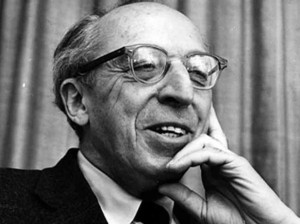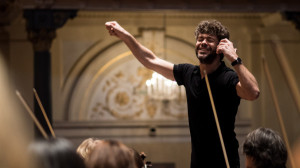 Pablo Heras-Casado is the young Spanish conductor who seems to be conducting everywhere all the time. He is Principal Conductor of Saint Luke’s, New York, since 2012, and Principal Guest Conductor of Teatro Real, Madrid, since 2014, the year he was named Musical America’s Conductor of the Year. He conducted the San Francisco Symphony three times, April 27 – 29, in an unusual program matching major 20th century composers with a lengthy world premiere work by Mason Bates. The Bates work, Auditorium, was commissioned by the SF Symphony. Adding more electronic interest to the electronica in Auditorium, the April 27 concert attended by the Hedgehogs was the first ever to stream live from a major orchestra to broadcast online worldwide via Facebook Live. It launched at 8:15pm PDT on April 27 on the SFS Facebook page, and will be archived for future viewing. The program included Dance Suite (1923) by Bela Bartok, Auditorium (2016) by Mason Bates, Le Tombeau de Couperin (1919) by Maurice Ravel, Symphony No. 9 in E-flat major, Opus 70(1945), by Dmitri Shostakovich.
Pablo Heras-Casado is the young Spanish conductor who seems to be conducting everywhere all the time. He is Principal Conductor of Saint Luke’s, New York, since 2012, and Principal Guest Conductor of Teatro Real, Madrid, since 2014, the year he was named Musical America’s Conductor of the Year. He conducted the San Francisco Symphony three times, April 27 – 29, in an unusual program matching major 20th century composers with a lengthy world premiere work by Mason Bates. The Bates work, Auditorium, was commissioned by the SF Symphony. Adding more electronic interest to the electronica in Auditorium, the April 27 concert attended by the Hedgehogs was the first ever to stream live from a major orchestra to broadcast online worldwide via Facebook Live. It launched at 8:15pm PDT on April 27 on the SFS Facebook page, and will be archived for future viewing. The program included Dance Suite (1923) by Bela Bartok, Auditorium (2016) by Mason Bates, Le Tombeau de Couperin (1919) by Maurice Ravel, Symphony No. 9 in E-flat major, Opus 70(1945), by Dmitri Shostakovich.
 The Dance Suite opened the program and was a high point of the performance. It is indeed a suite of five movements, each with multiple rhythms and characters. Bartok made extensive forays into the Hungarian countryside, sometimes with composer and musicologist Zoltan Kodaly, to gather authentic folk tunes. In his Dance Suite, there are contrasting styles which have more Middle Eastern or perhaps more Romanian character. However, he wrote them all himself and did not quote the folk tunes. While one movement might have a riotous force of dancers circling madly, another has the mysterious, nearly otherworldly magic that Bartok could create as though he heard the music of the spheres playing through the star light. The SF Symphony and Maestro Heras-Casado were able to present Bartok’s magic in all its quickness and variety without letting a musical “crack the whip” run away with them with dizzying abandon.
The Dance Suite opened the program and was a high point of the performance. It is indeed a suite of five movements, each with multiple rhythms and characters. Bartok made extensive forays into the Hungarian countryside, sometimes with composer and musicologist Zoltan Kodaly, to gather authentic folk tunes. In his Dance Suite, there are contrasting styles which have more Middle Eastern or perhaps more Romanian character. However, he wrote them all himself and did not quote the folk tunes. While one movement might have a riotous force of dancers circling madly, another has the mysterious, nearly otherworldly magic that Bartok could create as though he heard the music of the spheres playing through the star light. The SF Symphony and Maestro Heras-Casado were able to present Bartok’s magic in all its quickness and variety without letting a musical “crack the whip” run away with them with dizzying abandon.
As the streaming event was to begin at 8:15 and Bartok’s Dance Suite is listed in the program as “About 16 minutes,” one must conclude that the Bates piece alone was chosen to be broadcast across the Facebook world. According to the extensive program notes, “Auditorium begins with the premise that an orchestra like a person, can be possessed. The work haunts the SFS with ghostly processed recordings of a Baroque ensemble, with the electronic part comprised entirely of original neo-Baroque music created for the SF Conservatory’s Baroque Ensemble, conducted by Corey Jamason. Essentially it is a work for two orchestras–one live, one dead.” There were definitely sound effects reminiscent of creaky stairs, odd burblings, that dry ice evaporating ssst, and ghostly squeaks which brought to mind the Munsters of mid-century fame. Mr. Bates sat in the back of the orchestra with two laptops on which he produced the sounds. The orchestration included such notions as the playing of a piano key being promptly echoed by the playing of an electronic key.
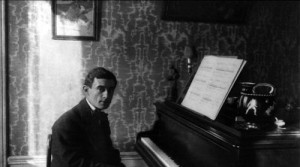 Ravel’s Le Tombeau de Couperin may have been the most familiar of the diverse works on the program, or at least the most frequently performed. For that reason, it was surprising that this was the point in the concert where the SF Symphony seemed to lose its enthusiasm. The work is made of four movements; each is a specific dance of the French Baroque era such as a Menuet/Minuet and the French folk dance the lively Rigaudon. The SFS had recently returned from an extensive East Coast tour; the conductor had perhaps focused most on the premiere work. One often could not hear the rhythms in the dances or recognize this well-loved work by an important, well-loved composer.
Ravel’s Le Tombeau de Couperin may have been the most familiar of the diverse works on the program, or at least the most frequently performed. For that reason, it was surprising that this was the point in the concert where the SF Symphony seemed to lose its enthusiasm. The work is made of four movements; each is a specific dance of the French Baroque era such as a Menuet/Minuet and the French folk dance the lively Rigaudon. The SFS had recently returned from an extensive East Coast tour; the conductor had perhaps focused most on the premiere work. One often could not hear the rhythms in the dances or recognize this well-loved work by an important, well-loved composer.
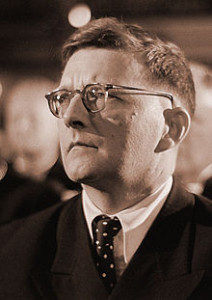 Shostakovich’s Symphony No. 9 fared better. A work of great energy which is the shortest symphony by Shostakovich, it was applauded by the public but reviled by the Soviet government when premiered. The bureaucracy from Stalin on down mostly despised their great composer. He did not write to formula. He presented a perversity to party line which enraged them. Danger followed closely behind Shostakovich throughout his career. This symphony, according to those in charge, should have been an heroic anthem to the Russians whose courage, perseverance, massive sacrifices, and dreadful winter had defeated the Nazis. Instead, it is playful, frisky, almost jokey, but it is a comedy that suggests it is only being funny because the tragedy behind the mask is too enormous and permanent to describe. The SF Symphony responded to Maestro Heras-Casado playing breathlessly like a runaway troika.
Shostakovich’s Symphony No. 9 fared better. A work of great energy which is the shortest symphony by Shostakovich, it was applauded by the public but reviled by the Soviet government when premiered. The bureaucracy from Stalin on down mostly despised their great composer. He did not write to formula. He presented a perversity to party line which enraged them. Danger followed closely behind Shostakovich throughout his career. This symphony, according to those in charge, should have been an heroic anthem to the Russians whose courage, perseverance, massive sacrifices, and dreadful winter had defeated the Nazis. Instead, it is playful, frisky, almost jokey, but it is a comedy that suggests it is only being funny because the tragedy behind the mask is too enormous and permanent to describe. The SF Symphony responded to Maestro Heras-Casado playing breathlessly like a runaway troika.
 EARLY BIRD prices are available now through June 30 for the performances, workshops & classes of IDF@SV 2016. Be the Early Bird! Have exciting, unique dance experiences and enjoy the early bird registration. Here are the schedules & prices as of this date. Full Day of Dance© offers five fabulous OPEN MASTER classes taught by greatly admired professional dancers who also love to teach. MIXED LEVELS. Professionals to beginners welcome. Take any number of classes, the price per class reduces with each added class. Argentine Tango is 90 minutes; all others one hour.
EARLY BIRD prices are available now through June 30 for the performances, workshops & classes of IDF@SV 2016. Be the Early Bird! Have exciting, unique dance experiences and enjoy the early bird registration. Here are the schedules & prices as of this date. Full Day of Dance© offers five fabulous OPEN MASTER classes taught by greatly admired professional dancers who also love to teach. MIXED LEVELS. Professionals to beginners welcome. Take any number of classes, the price per class reduces with each added class. Argentine Tango is 90 minutes; all others one hour.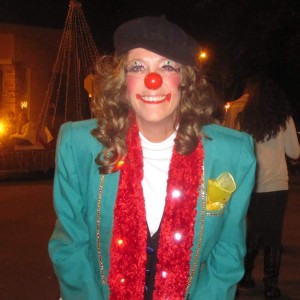 Physical Comedy: $30 for one; $45 for two together
Physical Comedy: $30 for one; $45 for two together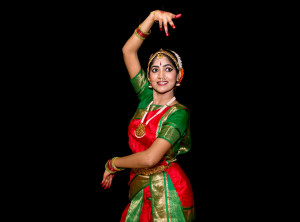 Choreo-Cubator©: $105 (all dance styles welcome; create your own work)
Choreo-Cubator©: $105 (all dance styles welcome; create your own work)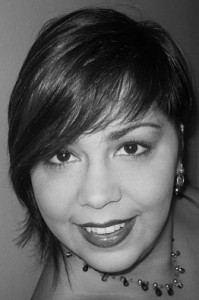 FESTIVAL CONCERT: $20 general; $12 over 65 & under 10; group tickets prices available
FESTIVAL CONCERT: $20 general; $12 over 65 & under 10; group tickets prices available

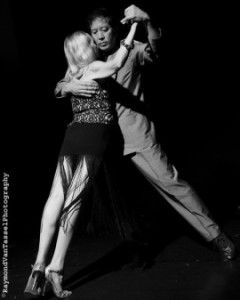
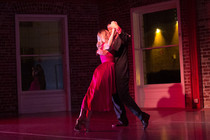
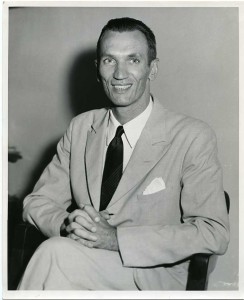
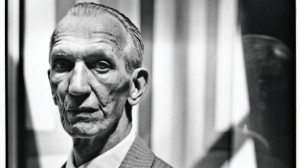 Jan Karski (1914-2000) married Pola Nirenska in 1965. She died tragically in 1992. She was a dancer whose family had been murdered in the Holocaust. In a speech, in 1981, given to American military officers who had liberated the concentration camps, he said that he had failed in his wartime mission, and so “thus I myself became a Jew. And just as my wife’s entire family was wiped out in the ghettos of Poland, in its concentration camps and crematoria–so have all the Jews who were slaughtered become my family. But I am a Christian Jew… I am a practicing Catholic…my faith tells me that the second original sin has been committed by humanity. This sin will haunt humanity to the end. And I want it to be so.”
Jan Karski (1914-2000) married Pola Nirenska in 1965. She died tragically in 1992. She was a dancer whose family had been murdered in the Holocaust. In a speech, in 1981, given to American military officers who had liberated the concentration camps, he said that he had failed in his wartime mission, and so “thus I myself became a Jew. And just as my wife’s entire family was wiped out in the ghettos of Poland, in its concentration camps and crematoria–so have all the Jews who were slaughtered become my family. But I am a Christian Jew… I am a practicing Catholic…my faith tells me that the second original sin has been committed by humanity. This sin will haunt humanity to the end. And I want it to be so.”





